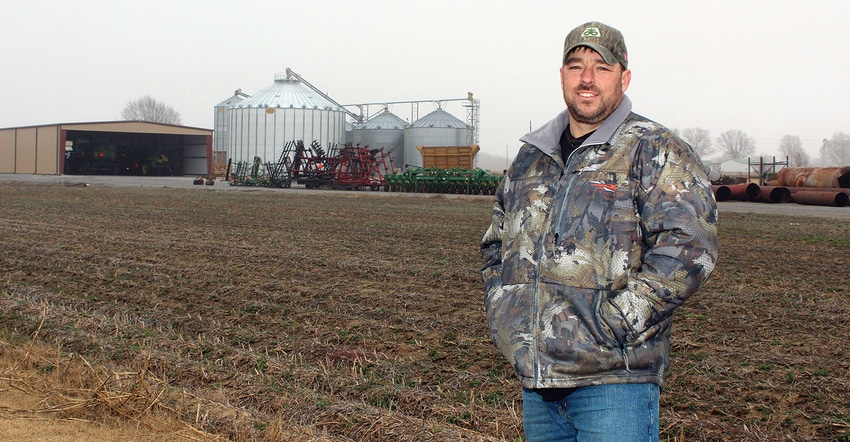
Lauderdale County, Tenn., farmer Brad Burks credits planting soybeans early, timely irrigation, and interval nutrient applications for his yield success.
Burks averaged 100.2 bushels on 3 acres inside a 180-acre field that, overall, averaged 96 bushels. "I planted on May 6 but would like to plant before mid- to late April. Planting soybeans early is the key to my good yields," Burks says. "Maintaining adequate levels of nitrogen, potassium, and phosphorus is important."
Burks won the University of Tennessee's "Top Bean" soybean yield contest in 2019. He also won the yield contest organized by Pioneer Hi-Bred International in 2019.
Agronomy and irrigation
Burks works with agronomist Brian Adams, Volunteer Ag, to review soil test results and decide on nutrient inputs. "Brad does a great job maintaining high native soil levels," Adams says.
They used Smart Quatro and Smart B-Mo, a 5% boron and 0.5 percent molithium product to promote movement of boron to developing fruit. They apply it in the early vegetative stage, the late vegetative stage and then again at R-3.
He applies humic acid to stimulate soil microbial activity and nutrient uptake. "We include it with any nutrient spray application," Burks says.
After a good burndown to start clean, Burks applies a pre-emerge herbicide at planting. "We usually have a good stand 10 days later," Burks says.
The winning field is close to the Forked Deer River. Burks pumps river water through underground pipes to risers across the fields where poly pipe is connected to the riser bonnets. "We were the first in this area to furrow irrigate with poly pipe almost 20 years ago. Figuring out hole sizes was trial and error back then," Burks says. "Now, I'm using Pipe Planner and it's increasing my efficiency. I start irrigating when pod-fill begins."
Flooded rice was grown on Burks Farms in the 1950s. River water is still a reliable source. "It takes about 24 hours to water one section of the field where I won the yield contest," Burks says. "I have six risers on that field. It takes me about six days to irrigate the entire field."
Other keys
Burks will continue a soybean/corn rotation. "We'll run over the field with a bedder roller to re-shape the beds and plant," Burks says. "Brian tells me I have some of the deepest soils he's seen in west Tennessee."
Burks produces soybeans that regularly grow above his shoulders. He selected Pioneer variety P48A60X after planting on-farm trials several years ago. "Those on-farm trials showed me the varieties I should use in my silt loam soil. I have to have a variety that won't lodge," Burks says.
When asked if he would do anything different to the winning field if he could go back, his response was quick. "I'd plant earlier."
About the Author(s)
You May Also Like




